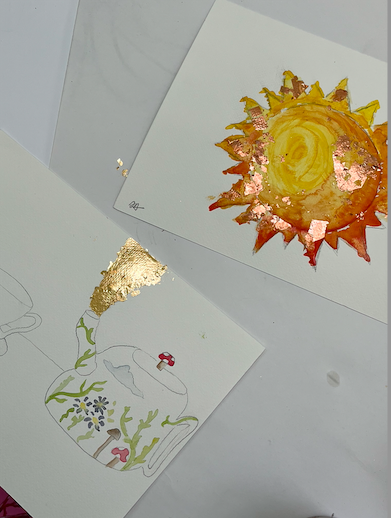Even though we covered so much in this course, I have gathered 10 of the main takeaways that I will incorporate into my pedagogy and practice as an educator. These insights have helped shape my understanding of how to create an inclusive and culturally responsive classroom environment. I am excited to apply these principles in my future teaching.
- The Importance of the First Peoples Principles of Learning (FPPL) in Curriculum and Classroom: I learned how to include these principles in my lesson planning to create a learning environment that honours Indigenous ways of knowing. This approach highlights interconnectedness, reciprocity, and holistic perspectives.
- Curriculum, Core Competencies, and Lesson Planning: This course emphasized the importance of narrowing the scope of lesson planning. Instead of designing units, we focused on creating specific, achievable lessons with clear learning targets and success criteria based on B.C.’s Curriculum.
- Connecting Students to Community: Our field trips to the Two Rivers Gallery and the Prince George Public Library gave me valuable insight into how we can connect students with the wider community. By incorporating these types of local resources and experiences, we can help students understand the importance of place based learning and its relevance to their everyday lives.
- The Professional Standards for B.C. Teachers: This course taught me how to put the Professional Standards for Teaching into practice. We learned not only what these standards are but also how to apply them in real-life teaching scenarios.
- Universal Design for Learning (UDL): I gained a deeper understanding of how the UDL can make lessons accessible to all students by providing multiple means of engagement and representation. I will use this approach to ensure that every student has the opportunity to succeed.
- Assessment of Learning: I learned how to integrate both formative and summative assessments into my teaching. By using ongoing assessments to guide instruction and final evaluations to measure student learning, I can better support students in their academic growth.
- The Power of Land Based Learning: Our field trip to West Lake, where we practiced land acknowledgment and engaged in a walking curriculum activity, taught me the value of connecting students to the land and nature as a way of deepening their learning and fostering respect for the environment.
- Strength-Based Teaching and Identity: Our lecture on strength-based learning, SOGI (sexual orientation and gender identity), and anti-racism helped me see how important it is to celebrate student identity in the classroom. I feel I am closer to understanding how to create a classroom where students feel seen, valued, and empowered to express themselves. This is essential for creating a supportive and inclusive learning environment.
- Integrating Arts and Culture: The Two Rivers Gallery visit reminded me of how essential it is to integrate the fine arts into the classroom. Whether through visual arts, music, or drama, I now see how the arts can be powerful tools for connecting students to their culture, community, and learning experiences.
- Inclusive Teaching Practices: I now better understand the importance of building inclusive classrooms where all students feel valued and heard. I plan to continue learning about how to adapt lessons, to use resources such as ARC-BC and materials to meet the needs of all students, especially those with exceptionalities.
